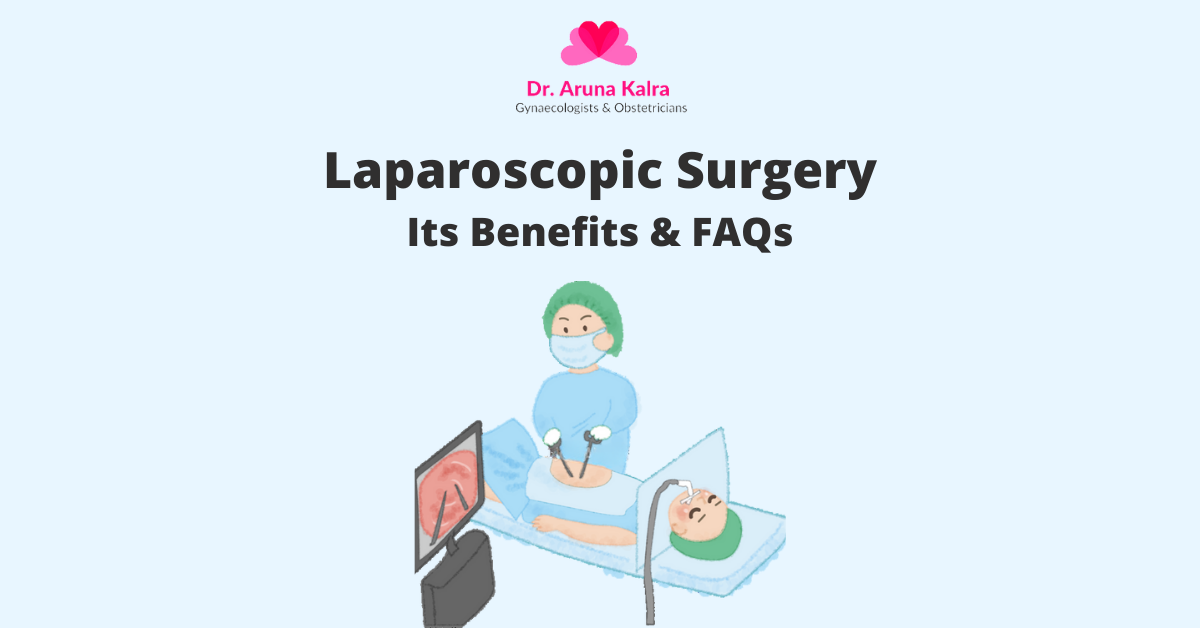
Laparoscopic Surgery and Its Benefits
Laparoscopy is a low-risk, minimally invasive surgical diagnostic and therapeutic procedure used to examine and treat diseases of abdominal organs. It is also known as minimally invasive endoscopic surgery and requires only small incisions. In order to look at the abdominal organs, this surgery uses an instrument called laparoscope, a long, thin tube with high intensity light and a high-resolution camera at the front. This allows the surgeon to look inside the patient’s body in no time, without performing an open surgery.
Laparoscopic surgery is often performed for ovarian cyst removal, fibroids removal, hysterectomy, and tubal ligation (surgical contraception), fallopian tube recanalization and uterus reconstructive surgeries. It also helps to identify the reason behind pelvic or abdominal pain, unexplained infertility or when imaging techniques like ultrasound, CT scan and MRI do not provide enough information or insight for a diagnosis. The procedure may also be performed to take a sample of tissue or a biopsy, from a particular abdominal organ. This surgery is also used to determine conditions such as endometriosis or fibroids.
Benefits attached to Laparoscopic Surgery
Laparoscopic surgery has a number of benefits attached to it including:
- You have very small scars.
- You get discharged from the hospital early.
- You have fewer chances of injury to other organs.
- You have a quick recovery.
- You feel less pain while your scars heal.
- You get back to your normal routine sooner.
- You have less internal scarring.
FAQs about Laparoscopic Surgery
Q. How is Laparoscopy done?
A. Laparoscopic surgery is done using an instrument called Laparoscope. It is a long slender device that is inserted inside the abdomen through a small incision. It also has a camera attached to it which allows the doctor to view the inside of your organs on a screen.
Q. What are the risks associated with Laparoscopic surgery?
A. The risks are similar but in very small percentage as compared to open surgeries. There is always a possibility that the surgeon may have to make a larger incision depending on the diagnosis. Other risks can be:
- Bleeding or hernia (a bulge caused by poor healing) at the incision area
- Infection
- Internal bleeding
- Damage to a blood vessel or other organs like bladder, bowel, ureters.
Q. What can I expect on the day of surgery?
A. On the day of the surgery, you will be asked to arrive early. The members of our nursing and anaesthesia staff will start your IV and will review the planned procedure along with the surgeon. Depending on the procedure you are having, you will be given antibiotics to prevent infection or have a catheter placed after you are asleep.
Q. What can I expect immediately after surgery?
A. Generally, you may experience some of the following symptoms:
- Uterine cramping
- Nausea
- Shoulder pain from the gas used during laparoscopy
- Scratchy throat, if a breathing tube was placed
- Feeling bloated or gassy
- Vaginal bleeding or discharge
Q. What is the normal recovery time after Laparoscopic surgery?
A. The recovery time varies from surgery to surgery and from patient to patient. Many patients require medicines for pain for about a week after surgery. It is generally advised to avoid intercourse, douching, exercises or heavy lifting for 4-6 weeks.
Q. What should I expect during recovery?
A. During recovery, you may feel tired and may have some discomfort. You may feel sour around the incision area. You may have a sore throat or pain in shoulder and back. This goes away within a few days.
Q. Can I have other procedures performed at the same time?
A. Yes, coordination of other procedures, like bladder procedures, can be performed at the same time.
Q. What kind of pain relief is used during Laparoscopy?
A. Laparoscopic surgery is usually performed with general anaesthesia. This anaesthesia puts you to sleep.
Q. How soon after the surgery can I get back to my normal routine activities?
A. Your doctor will let you know when you can get back to your routine activities. For minor procedures, it is often 2-3 days after the surgery. For complex procedures, like hysterectomy, it can take a bit longer. You may be advised to avoid heavy activities or exercise.
Q. What signs or symptoms should I watch out for after the surgery?
A. Contact your doctor right away if you experience any of the following symptoms:
- Pain that is severe or gets worse
- Fever
- Heavy vaginal bleeding
- Redness, swelling or discharge from the incision
- Fainting
- Inability to empty your bladder
- Vomiting
- Shortness of breath or chest pain


